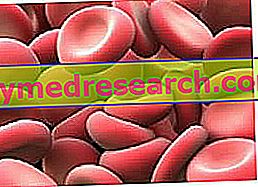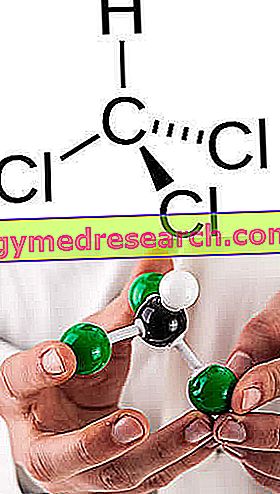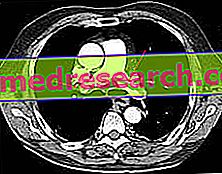The term polycythemia identifies any generic increase in the number of red blood cells in the blood, an event that normally translates into an increase in plasma hemoglobin and hematocrit (blood viscosity) in clinical practice.

Secondary polycythemia
Secondary polycythemias are mostly related to chronic hypoxemia, or a lack of oxygen in the blood. This condition induces an adaptive physiological response which - mediated by the increased synthesis of erythropoietin in the kidney - leads to an increase in the synthesis of red blood cells. In this way the body is able to capture more oxygen from the atmospheric air and make up for the shortcomings within certain limits. Not surprisingly, polycythemia is a typical trait of many high-altitude ethnic groups, which can also be appreciated in those who stay for several weeks in high altitude; as anticipated, this is an adaptive response to the reduced partial oxygen pressure that characterizes these environments. The physiological high-altitude polycythemia explains why various athletes, above all practicing cross-country sports (running, cycling, etc.), train for some periods at high altitude: the increase in red blood cells will ensure an improvement in sports performance.
Causes of secondary polycythemia:
From increased synthesis of erythropoietin in response to arterial hypoxemia
- extended stay in the high mountains
- respiratory diseases with alveolar hypoventilation (eg COPD)
- congenital heart disease with right-to-left shunt
- methemoglobinemia
- carboxyhemoglobinemia
- sleep apnea in the course of excessive obesity
From inappropriate secretion of erythropoietin
- hypernephroma
- renal cysts (polycystic kidney)
- uterine fibroma
- hepatic neoplasms
- pheochromocytoma
From increased intake of erythropoietin or other drugs with similar action (epoetin), both for therapeutic and doping purposes
According to the above, secondary polycythemia is a reversible phenomenon: when the individual falls to low altitude or the cause of hypoxia fails, the number of red blood cells is gradually restored.
Primary polycythemia
To learn more: Polycythemia symptoms
Also called primary polycythemia or erythremia / Vaquez-Oslere disease, polycythemia vera is an autonomous myeloproliferative disease characterized by an abnormal proliferation of genetically based haemocytoblasts [mutation of tyrosine kinase JAK2 in stem cells of 90% of patients with polycythemia vera ].
It results in a high synthesis of red blood cells, generally accompanied also by an enhanced synthesis of white blood cells and platelets. The result is an increase in hematocrit and total blood volume (plasma hyperviscosity and hypervolemia); the increased haematic viscosity and the blood pressure on the vascular walls can cause important alterations of the blood flow and determine rather dangerous consequences for the health of the patient suffering from polycythemia vera: the capillaries become clogged due to the excessive viscosity of the blood, the thrombotic phenomena they increase (the risk of stroke, angina pectoris, myocardial infarction, superficial and deep thrombophlebitis and, more rarely, pulmonary embolism) increases. Generally dizziness, headache, mild hypertension, hepatomegaly, splenomegaly and bleeding phenomena (nosebleeds, blood loss from gums and ecchymoses) are present; the skin takes on reddish shades (due to the increased presence of oxygenated hemoglobin) and bluish - cyanotic (due to the increased presence of deoxygenated hemoglobin), and is often the subject of itching after bathing.
The diagnosis of polycythemia vera is based on the study of the blood count:
- the hemoglobin and hematocrit values, higher than the norm, can respectively reach 22-24 g / dl and 55-60%, while the finding of neutrophilic and platelet leukocytosis is common.
and other biohumoral parameters:
- increased blood levels of cholesterol, uric acid, vitamin B12, LDH, intraleucocyte ALP
At the bone marrow biopsy and the subsequent morphological examination of the bone marrow there is erythroid hyperplasia; furthermore it is possible to demonstrate the presence of the aforementioned JAK2 V617F mutation. Ultrasonography and objective assessment can show an increase in the size of the liver and spleen.
The therapy, originally based on bloodletting or phlebotomy - that is to say on the removal of 300-500 ml of blood every 2-3 days until the hematocrit drops below the threshold of 50%, possibly compensated by the re-infusion of the plasma or by the administration of its substitutes - it can use cytotoxic / chemotherapeutic drugs (busulfan, hydroxyurea, cyclophosphamide, chlorambucil, cytosine arabinoside, melphalan) or radiotherapy. The latter interventions aim to depress the abnormal proliferative activity of bone marrow, in which polycythemia vera recognizes its own pathogenetic center. New generation drugs that can inhibit the activity of the protein tyrosine-kinase (JAK2) responsible for the disease are being developed and tested.



